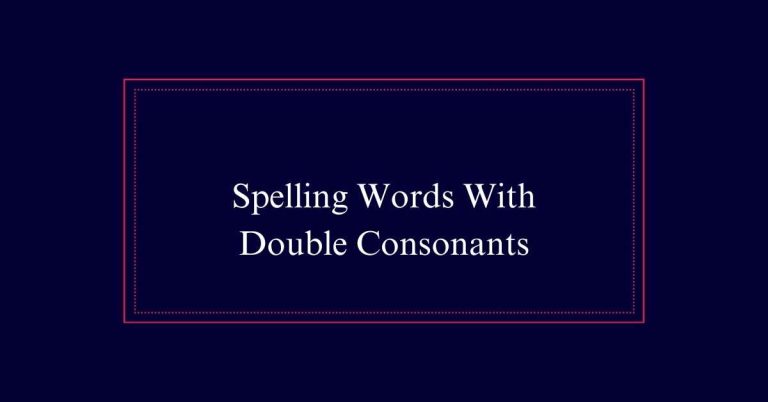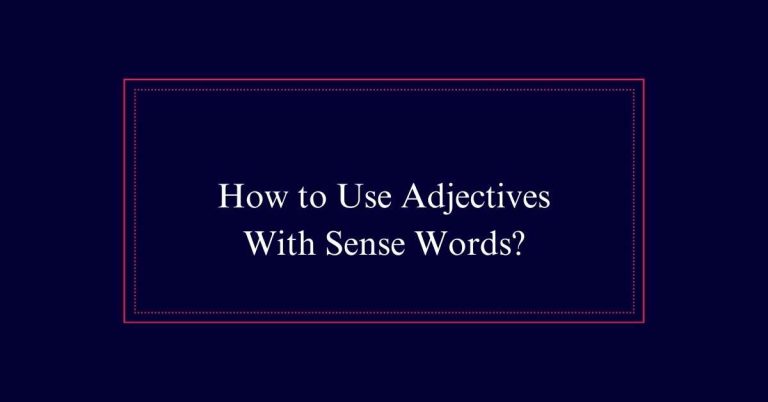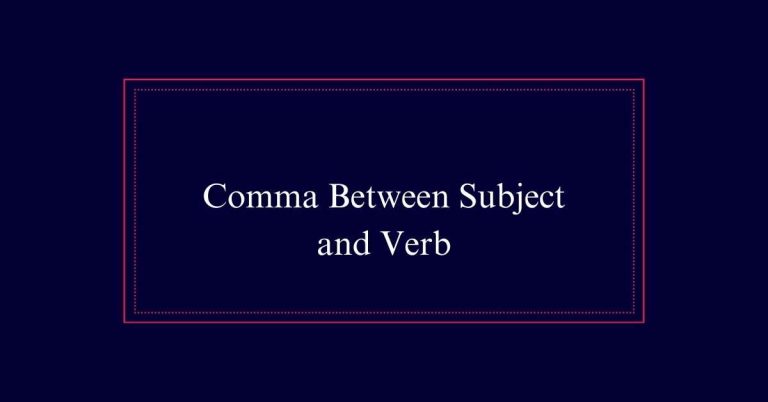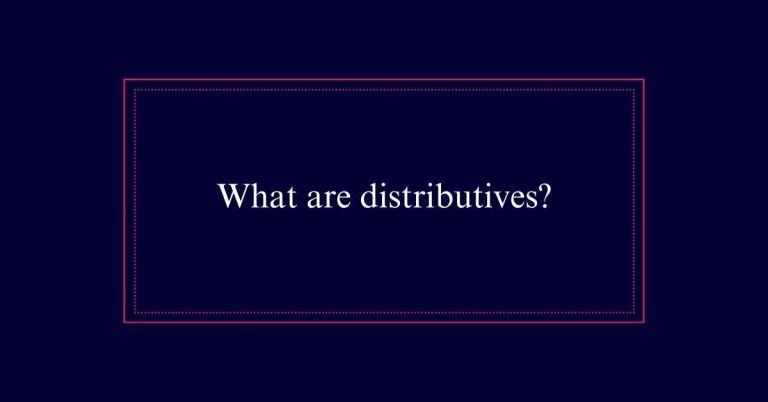Comma Before Or After Parenthesis?
When using commas with parentheses, place the comma after the closing parenthesis if necessary. Do not place a comma before the opening parenthesis, as this can confuse readers. Commas and parentheses serve different purposes; commas separate elements within a sentence, while parentheses enclose non-essential information. For example, ‘After the meeting (which lasted two hours), we went for lunch.’
Commas Never Before Parentheses
A comma should never be placed directly before parentheses in a sentence. This is because parentheses are used to insert additional information that is grammatically separate from the main sentence.
Placing a comma before them can confuse the reader and disrupt the flow of the sentence. For example, ‘After opening the new cookie tin, (and eating several of the cookies) Mary had a hard time replacing the lid,’ uses parentheses incorrectly. The correct version is, ‘After opening the new cookie tin, Mary had a hard time replacing the lid.’
In this case, the comma correctly separates the dependent clause from the independent clause without interfering with the parenthetical information. Always place the comma after the parentheses if needed.
Proper Comma Placement
Proper comma placement is essential for guaranteeing clarity and coherence in writing. Commas help organize thoughts and separate ideas. A comma should never be placed before a parenthesis. Instead, it should follow the closing parenthesis if needed. For example: ‘After the meeting (which lasted two hours), we went for lunch.’ Here, the comma after the closing parenthesis is correct.
Commas and parentheses serve different purposes. Commas are used for separating clauses or list items, while parentheses add extra information. Use commas with parentheses only if the sentence would require one without them. For instance: ‘John, my friend, is visiting.’ With parentheses: ‘John (my friend) is visiting.’
Dependent and Independent Clauses
Understanding the distinction between dependent and independent clauses is essential for proper comma usage in sentences.
An independent clause can stand alone as a complete sentence, as it contains a subject and a verb. For example, ‘She ran to the store.’
A dependent clause, on the other hand, cannot stand alone and needs an independent clause to complete its meaning. For instance, ‘Because she was late’ is a dependent clause.
When a dependent clause precedes an independent clause, a comma is required after the dependent clause. For example: ‘Because she was late, she ran to the store.’
However, if the independent clause comes first, no comma is needed: ‘She ran to the store because she was late.’
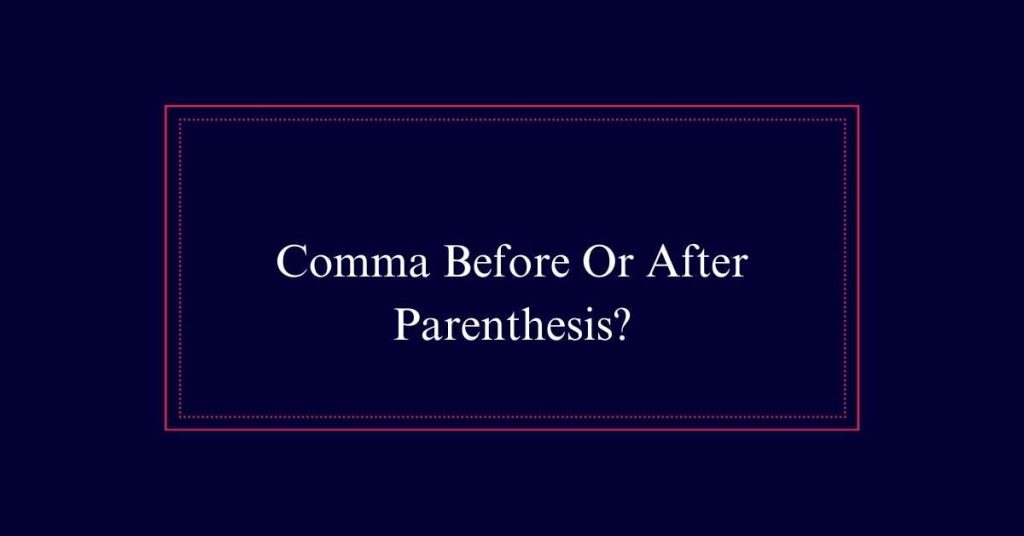
Commas and Parentheses Purposes
Commas and parentheses, although often found together, serve distinct purposes in sentence construction. Commas help separate elements within a sentence, such as clauses, items in a list, or introductory phrases. They guarantee readability and clarity.
Parentheses, on the other hand, enclose supplementary information that is not essential to the main sentence. This additional information can clarify or add context but is not essential for the sentence’s primary meaning.
Commas With Parentheses
When it comes to using commas with parentheses, it is vital to differentiate their distinct roles within a sentence. Commas should never precede parentheses. Instead, they may follow them if the main sentence requires it.
For example, ‘After the meeting (which ran late), we went for dinner.’ Here, the comma follows the closing parenthesis. If the sentence stands alone without parentheses, a comma may still be necessary. Make sure that commas within parentheses serve the information inside them, not the main sentence.
Proper usage: ‘The team included three members (John, Sarah, and Mike).’ Incorrect usage: ‘The team included three members (, John, Sarah, and Mike).’ Consistent, clear use of commas with parentheses enhances readability and coherence.
Parenthetical Information Use
Parenthetical information can add valuable context or clarification to a sentence without disrupting its main flow. Using parentheses allows writers to insert additional details that might otherwise clutter the main sentence. This technique guarantees the core message remains clear while providing extra context when needed.
Below is a table illustrating examples of proper usage:
| Example Sentence | With Parentheses Added |
|---|---|
| She loves chocolate. | She loves chocolate (especially dark chocolate). |
| He went to Paris. | He went to Paris (his favorite city). |
| The project is due tomorrow. | The project is due tomorrow (which is a bit stressful). |
| They bought a new house. | They bought a new house (a charming Victorian). |
Commas Within Parentheses
Proper punctuation within parentheses guarantees that the enclosed information is seamlessly integrated into the main sentence. Commas within parentheses are used to separate items in a series or to enhance readability. For example, ‘The committee included three members (John, Sarah, and Tim).’ Here, the commas help list the names clearly.
Importantly, these commas should not impact the main sentence’s punctuation. If the parenthetical information is removed, the sentence should still be accurate.
Incorrect usage, such as ‘When they arrived (, finally!) the students were shown their rooms,’ disrupts the sentence flow. Correct usage ensures clarity, as in ‘When they arrived (finally!), the students were shown their rooms.’
Series Items in Parentheses
Series items within parentheses should be separated by commas to guarantee clarity and readability. This secures that each item in the list is distinct and easily identifiable.
This ensures that each item in the list is distinct and easily identifiable. For example, if you are listing names, write: ‘The committee members (John, Jane, and Jim) met to discuss the agenda.’ Each name is clearly separated by a comma, making the list easy to read.
The use of commas within parentheses follows the same rules as listing items outside parentheses. Whether listing people, objects, or concepts, commas help maintain clear communication.
Punctuation Clarity
Maintaining punctuation clarity is essential for effective communication. Proper punctuation helps convey the intended meaning without confusion.
Misplaced commas or unclear parenthetical information can lead to misunderstandings. Here are some tips to uphold punctuation clarity:
- Correct Placement: Place commas after parentheses if needed for the main sentence.
- Independent Clauses: Use commas to join dependent and independent clauses.
- Series Items: Use commas within parentheses to separate items in a series.
- Main Sentence: Ensure commas within parentheses do not punctuate the main sentence.
- Readability: Clear punctuation enhances readability and comprehension.
Consistent Comma Usage
Maintaining punctuation clarity naturally leads to the importance of consistent comma usage in writing.
Consistency in comma placement ensures that sentences are easy to read and understand. Proper comma usage clarifies the relationship between different parts of a sentence.
For example, always place commas after parentheses, not before. This helps maintain the flow of the main sentence. Additionally, use commas within parentheses only if necessary for the parenthetical information.
Incorrect comma placement can confuse readers and alter the intended meaning. Hence, practicing consistent comma usage is vital. It enhances readability and coherence, making your writing more effective and professional.
Frequently Asked Questions
Can Parentheses Be Used to Indicate Optional Text?
Yes, parentheses can indicate optional text. They offer additional information or clarification that is not essential to the main sentence. This helps maintain the flow of the text while providing extra details for the reader.
Do Parentheses Affect the Verb Tense in a Sentence?
Parentheses do not affect the verb tense in a sentence. The verb tense should remain consistent with the main sentence. Parenthetical information provides additional context or clarification without altering the primary grammatical structure.
How Do Parentheses Interact With Quotation Marks?
Parentheses and quotation marks interact based on the placement of punctuation. Periods and commas go inside quotation marks, while question marks, exclamation points, and colons depend on the sentence context. Parentheses follow this standard.
Are Parentheses Suitable for Formal Writing?
Parentheses can be suitable for formal writing when used sparingly. They provide additional information without interrupting the main text. However, overuse can make writing appear disjointed. Use them to clarify or add non-essential details.

